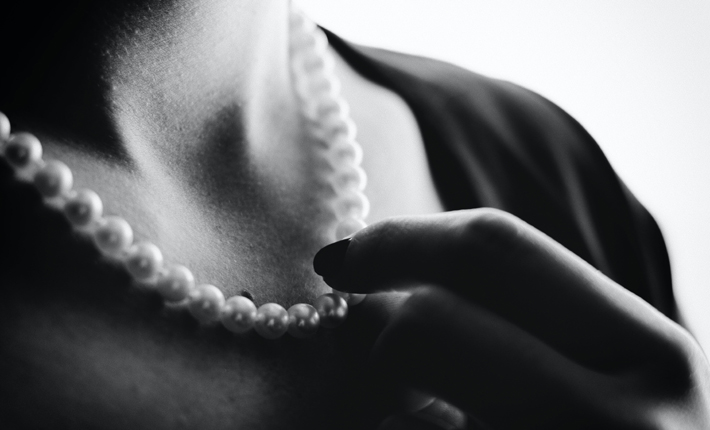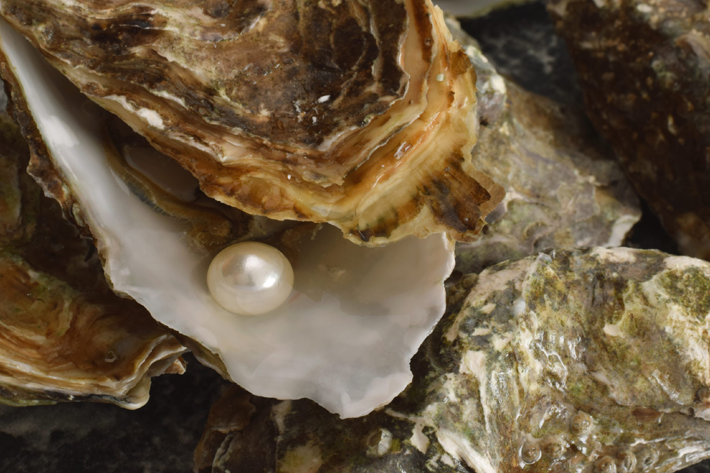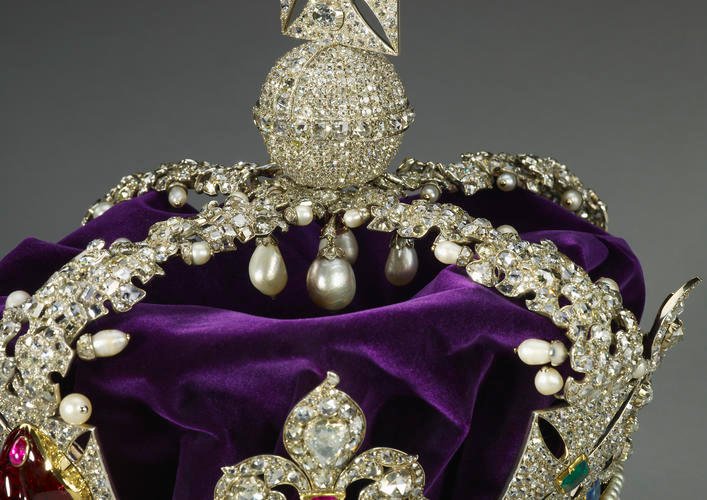
A Timeless Affair with Pearls

Ever wonder why pearls are so special? Or perhaps you have considered their journey in relationship to yours? Before we dive into the world of pearls and how we as humans interact with them, please meet Mad, the author you will surely be hearing more from!
How much overthinking is too much overthinking? Mad is a “look-up” kind of gal, with one eye set on her mind, another on her heart, and one hand pointing at the road. Wandering through life, she puts her words to paper, sharing her wonders with whoever is willing to read and share their thoughts. This column is here to make you feel understood and to be the voice of every little silly thought we’ve had. Follow Mad @madforyou_lhm
Pearls are one of the most precious objects in the world, but how do they come to be? What makes them so special?
The expression “diamond in the rough” is loosely used to portray someone who has great potential but still needs some sharpening around the edges. At the same time, diamonds, just like precious stones and pearls, take their time to turn into what we see today.
These stones can turn into significant and unique pieces that adorn some of the world’s most important necks and ears.
Yet pearls are one of the very few pieces that come from one living being to be worn by another. How decadent of humans to exploit oysters for food and fashion. Yet here we are.
Did you know the formation of a pearl is accidental?
It happens when an irritating organism enters a mollusk and gets trapped. Then several layers of nacre grow around it, creating the oval shape we commonly call pearls. These are true natural pearls. They develop on their own and are extremely rare to find in the wild.

However, knowing every type of shelled mollusk can technically create these pieces, a business is made around cultured pearls. Humans farm these nacre objects using a process by which they implant a tissue inside mollusks for them to create pearls.
The value of pearls can many times come down to size, color, shape, and luster. The bigger, the smoother, and the more opaque, the better. But sometimes, something else adds to that value.
Experience of life. Of the pearl itself, as well as its wearer. In 2018 Marie Antoinette’s pendant sold for $32 Million at auction. These pearls dated back to the 18th century. And there are two sets of pearls worn by Queen Elizabeth I herself in the 16th century that sit on top of the Imperial Crown of the late Queen Elizabeth II. The value of the crown is hard to define, but the estimate is between a whopping $3.4 to $5.7 Billion.

Therefore two things make up the value of a pearl—its characteristics and the significance of its wearer. However, it isn’t easy to measure the worth or importance of a piece. The luxury is immeasurable.
Doesn’t this make you wonder if we aren’t just like this raw material? Formed by what is surrounding us, created in the depths of the unknown, only to come out of the ocean as a truly unique piece of a puzzle.
Every single one of us is different from the next. Isn’t that something to celebrate rather than challenge?
Our value is just as infinite!
And until we reach the pearl that sits on a royal crown, we must remember the process that exists for us to get there. All pearls get to sit on crowns; they just take some time to get there.
Words by @madforyou_lhm
Feature Photo by Jeremy Morris
More to Love!
Star Gazing & Zodiac Living with Mad




